This post may contain affiliate links. To learn more check my disclosure page.
Gluten-free pastas can still be tasty. We researched and tested the best gluten-free pastas for different diets, including vegan, low-carb, and more.
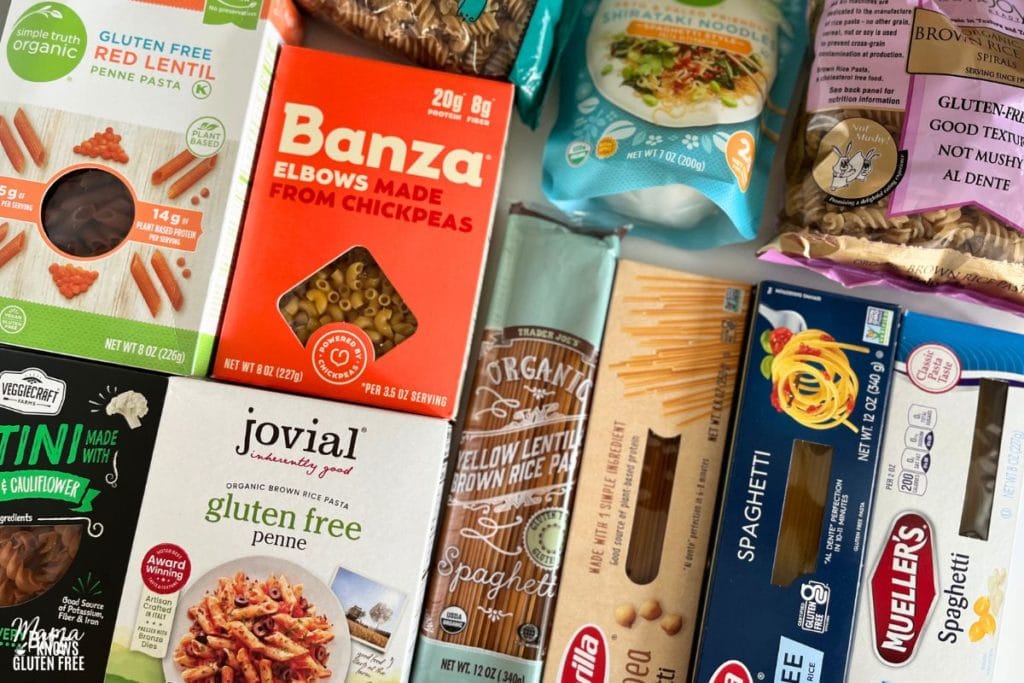
Gluten-free Pasta
Gluten-free pastas have come a long way. They were once known for being mushy or gummy, but today there are a number of different semolina-free noodle options that literally hold up in hot water (and sauce). You can also find gluten-free pastas that have more protein or fiber than their traditional wheat-based counterparts, thanks to ingredients like chickpeas, lentils, and quinoa.
If finding a one-to-one alternative is your priority, rice-based pasta is a great candidate for giving all kinds of traditional pasta dishes a gluten-free makeover.
To find the best gluten-free pastas on the market, we conducted side-by-side taste tests of 11 products to find the very best gluten-free pastas for every type of dish, from mac and cheese to lasagna.
Best Gluten-Free Pasta Overall
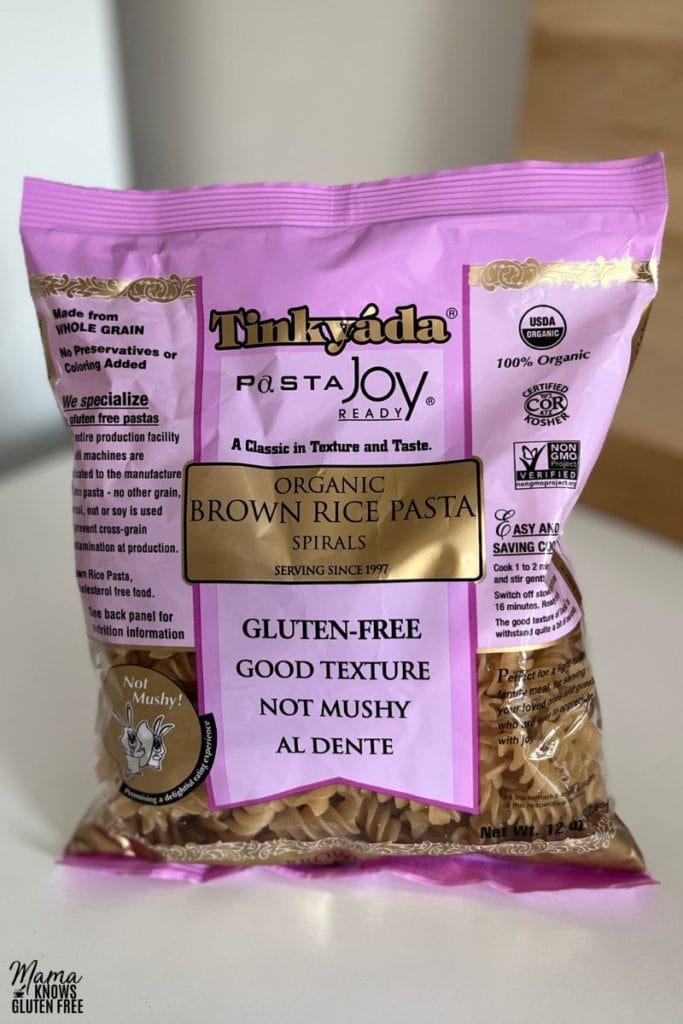
Tinkyáda Organic Brown Rice Pasta Spirals
Pros
- Great flavor
- Great texture
- No additives
- Certified organic
Cons
- Takes longer to cook than other pastas we tested
- Less protein than some other gluten-free pastas
Tinkyáda’s brown rice pasta is a substitute that’s not making any compromises when it comes to taste or texture. In our taste tests, we found it to have a good flavor, and a nice soft feel that’s not too chewy. The spiral shape is quite versatile, and could be used with all kinds of different sauces or in soup.
The company specializes in making rice pasta, and the entire facility is dedicated to producing gluten-free pasta, so there’s no risk of cross-contamination from corn, soy, nuts, or other grains according to the manufacturer. In addition to being USDA certified, the pasta is non-GMO verified.
It’s worth noting that this pasta does take 13 to 14 minutes to cook on a medium-high heat.
Specs
- Base Ingredient: Brown Rice
- Number of Servings: About 6 per package
- Protein Per Serving: 4 grams
- Calories Per Serving: 200
Best for Pasta Salads
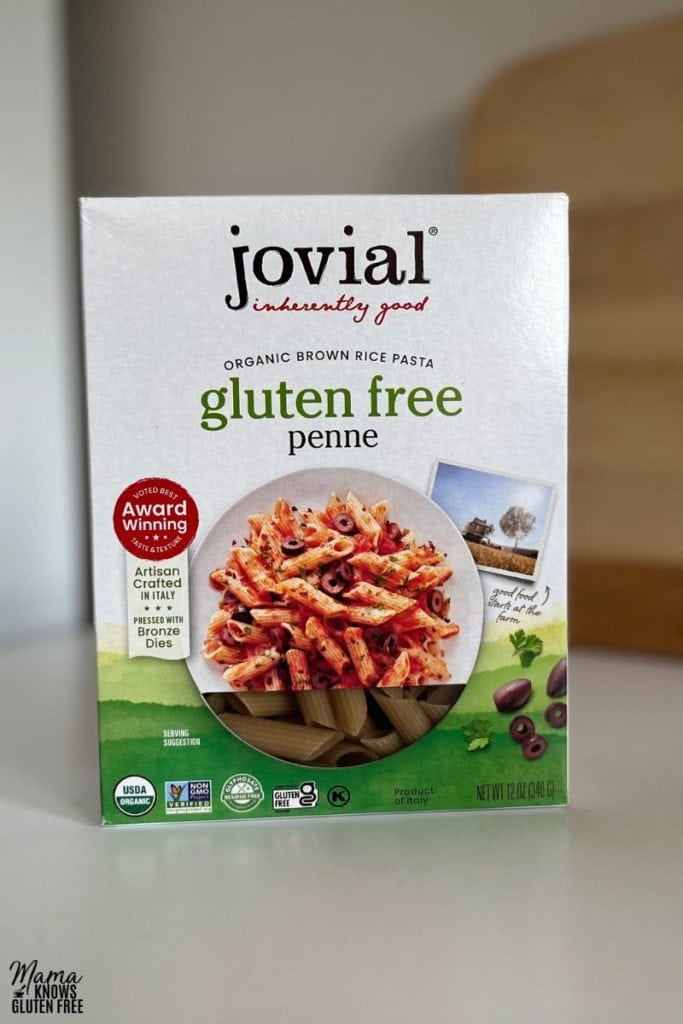
Jovial Gluten-Free Penne
Pros
- Good flavor
- Holds its firmness
- Good shape for sauce and dressing
- Third-party gluten-free certification
Cons
- Some may find it chewy when prepared as directed
- Some other gluten-free pastas have more protein
Another brown-rice pasta that our testers enjoyed, this penne from Jovial is particularly robust after cooling off and sitting in sauce, making it ideal for a creamy Italian pasta salad. It cooks in 12 minutes for an al-dente texture, but if you prefer a softer noodle you may want to cook it longer. It’s a product of Italy and is certified organic, gmo-free, and gluten-free by trusted third party organizations.
Specs
- Base Ingredient: Brown Rice
- Number of Servings: 6 per container
- Protein Per Serving: 5 grams
- Calories Per Serving: 210
Best Gluten-Free Spaghetti
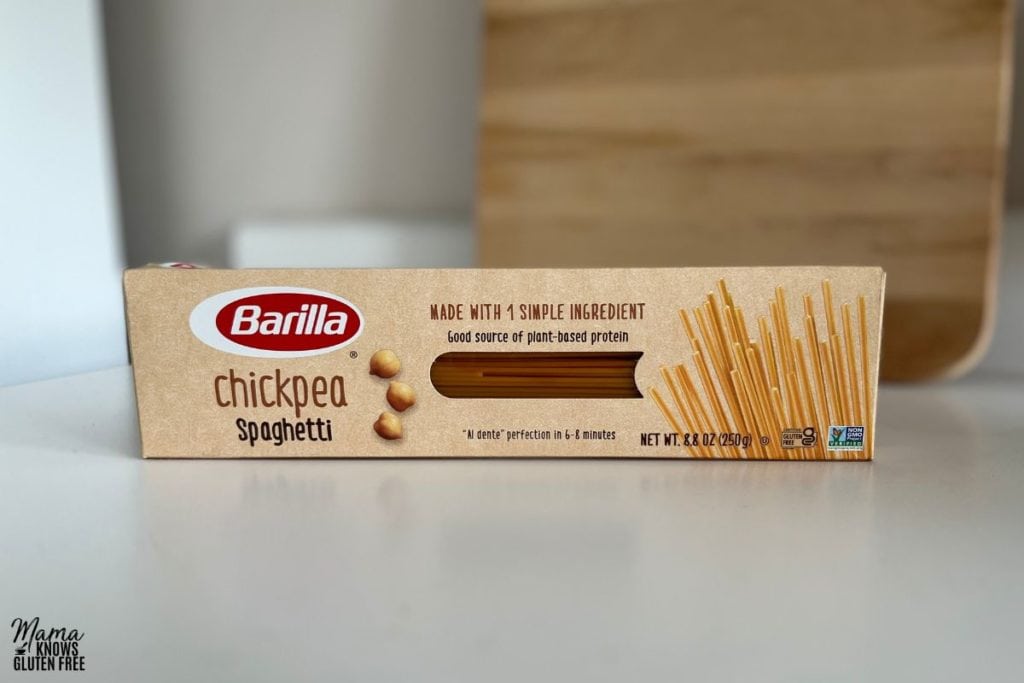
Barilla Chickpea Spaghetti
Pros
- Good flavor that’s similar to wheat pasta
- Didn’t get mushy
- Third-party gluten-free certification
- Good source of protein
Cons
- Becomes more chewy as it cools
- May require a longer cooking time than the package directions
Our taste testers found that this pasta’s flavor was the most like traditional semolina pasta when simply dressed with olive oil and salt, whereas some of the other corn and rice pastas that we sampled were bland without sauce. Barilla’s chickpea pasta complemented tomato sauce well, and also reheated without losing its texture. It’s also higher in protein and fiber than rice flour or corn based pastas.
The package suggests a cooking time of as little as 6 minutes, plus “1 or 2 extra minutes for more tender pasta.” In our tests, we found 6 minutes to be a little too tough, so we recommend keeping your noodles boiling for 8 minutes.
Specs
- Base Ingredient: Chickpea Flour
- Number of Servings: about 4 per container
- Protein Per Serving: 11 grams
- Calories Per Serving: 190
Best Lasagna
Barilla Gluten-Free Lasagna Noodles
Pros
- Carried by many grocery stores
- No boiling necessary
- Good texture
- Third-party gluten-free certification
Cons
- Less versatile
This is the pasta that Audrey, the founder of Mama Knows Gluten Free, recommends for her Gluten-Free Lasagna recipe. The noodles have the advantage of being oven-ready, which means you don’t have to boil or pre-cook them in any way before you layer them into your lasagna dish. This also means they aren’t as flexible as some other kinds of pastas, and it’s a good idea to use plenty of sauce or liquid in your baking dish to make sure the noodles get nice and tender.
Amazon shoppers give it 4.6 out of 5 stars in over 500 reviews.
Specs:
- Base Ingredient: Corn and Rice Flour
- Number of Servings: About 5 Per Package
- Protein Per Serving: 4 grams
- Calories Per Serving: 190
Best Gluten-Free Pasta for Soup
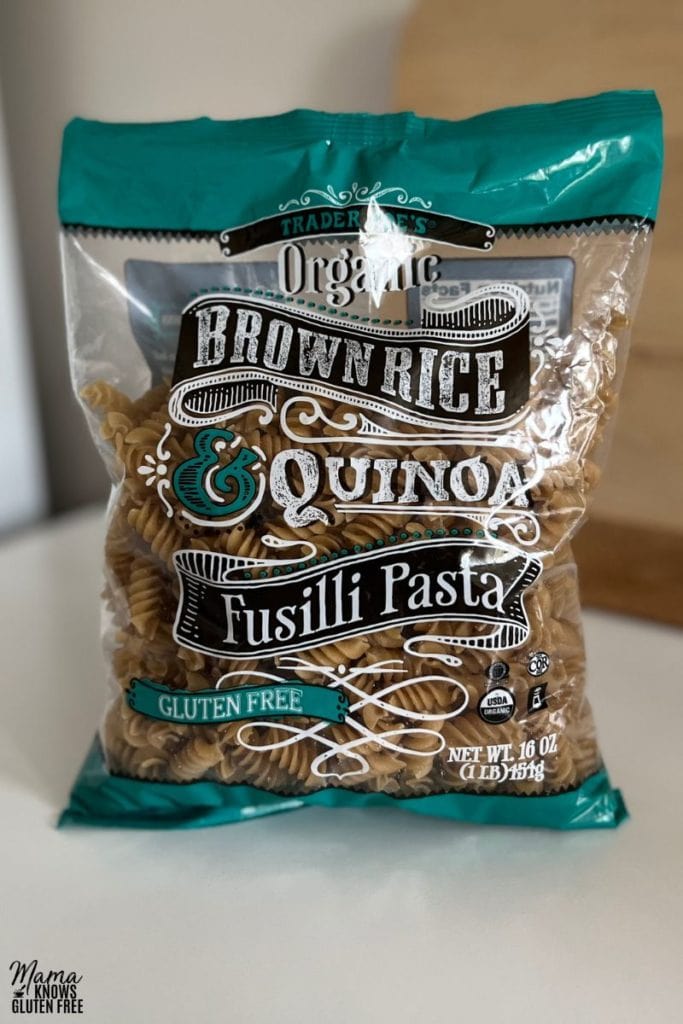
Trader Joe’s Brown Rice & Quinoa Fusilli Pasta
Pros
- Good flavor
- Good texture
- Organic
Cons
- Only sold at Trader Joe’s
- Less protein than some other gluten-free pastas
This fusilli is nice and soft and has an excellent flavor. It’s perfect in Gluten-Free Chicken Noodle Soup or topped with Gluten-Free Alfredo Sauce, and we also enjoyed it simply with butter and salt in our tests. It cooks up in 7 to 10 minutes. Although the pasta has a darker look when uncooked, after boiling it’s a light color that’s just like traditional wheat pasta.
One thing that surprised us is that despite an ingredient list that includes quinoa, this pasta’s nutritional profile is very similar to the other brown rice pastas we tested, with 2 grams of fiber and 4 grams of protein.
Specs
- Base Ingredient: Brown rice and quinoa flour
- Number of Servings: about 8 per package
- Protein Per Serving: 4 grams
- Calories Per Serving: 200
Best for Mac & Cheese
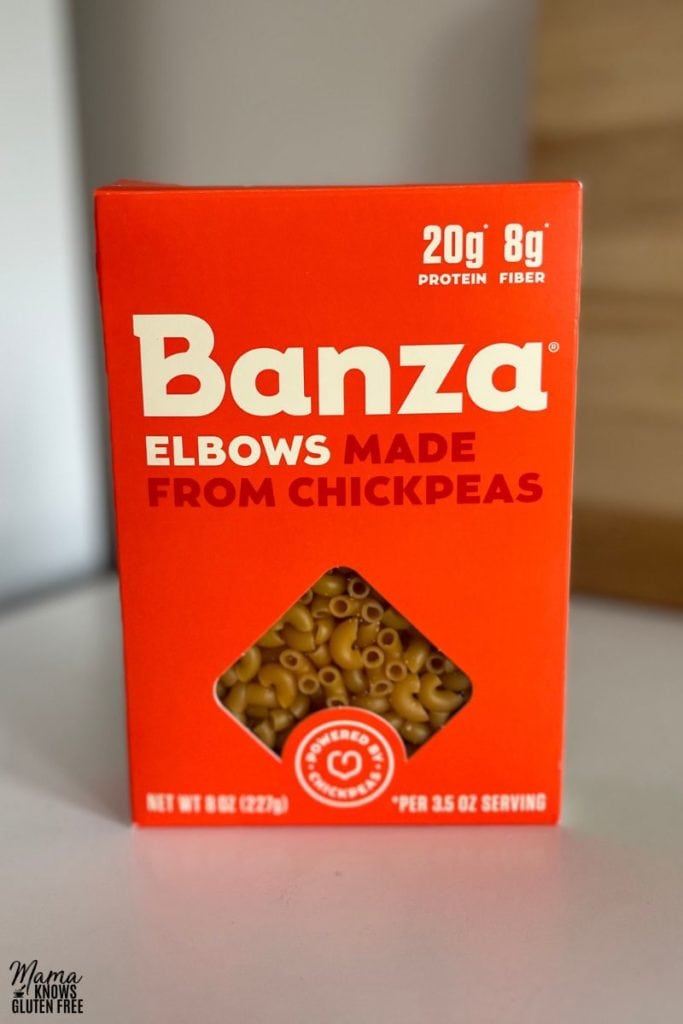
Banza Elbows
Pros
- Flavor goes well with cheese
- Holds a good firm texture
- High in protein
- Good source of fiber
Cons
- Texture changes as it cools
Banza’s chickpea pastas are a favorite of many people who are sensitive to gluten, thanks to its nice texture. It also has more fiber and protein than most of the other gluten-free pastas we tasted, and it doesn’t have any bean flavors that might compete with sauce–making it ideal for the next time you’re craving Gluten-Free Mac and Cheese. The whole family enjoyed these noodles, even my picky toddler.
It cooks in 7 to 9 minutes, less than some of the other pastas we tested, but it did leave behind some white foamy residue on the pot (but we had no problem washing this off).
Specs
- Base Ingredient: Chickpeas
- Number of Servings: 4 per container
- Protein Per Serving: 11 grams
- Calories Per Serving: 190
The Bottom Line:
If you could only stock the pantry with one gluten-free pasta, our top pick is Tinkyáda Organic Brown Rice Pasta Spirals. They’re organic, taste great, and are made in a facility that’s completely free from wheat and other allergens.
If you’re really looking to get more nutritional value out of your noodles, consider any of Banza’s chickpea pasta shapes. They’re higher in fiber and protein than many conventional or gluten-free pastas.
What to Keep In Mind When Buying Gluten-Free Pasta
Other Dietary Restrictions
If you have any additional allergies, sensitivities, or food restrictions, keep these in mind when shopping for gluten-free pasta. For example, some gluten-free products use an almond-flour base, making them unsuitable for nut allergies.
Your Favorite Recipes
There are so many different shapes of pasta because they all interact differently with the other elements of a dish, like meat and sauce. When shopping for gluten-free pasta, it’s good to keep in mind the shape of the pasta called for in your favorite and most frequently cooked recipes. It can be particularly hard to find gluten-free options in some shapes of pasta, like angel hair.
Storage Requirements
Some popular gluten-free pastas aren’t shelf stable, and need to be refrigerated. They also may not stay fresh for as long. This means you may need to plan to eat these pastas sooner.
Cost
Some gluten-free pastas can be considerably more expensive than regular wheat pastas. If this is putting too much of a strain on your budget, you may want to consider mixing up your menu with some more affordable gluten-free starches, like potatoes or rice.
How We Chose the Best Gluten-Free Pastas
For this list, we first conducted extensive market research by interviewing people who eat gluten-free diets, and by reading reviews by food writers and shoppers. Then, we purchased and tested 11 different gluten-free pastas for side-by-side taste tests with a range of different sauces. Testers shared their thoughts about the flavor and texture of noodles we tested, and selected their favorites for each type of dish.
Our top choices are based on flavor and texture, not nutritional values, but we have noted which gluten-free pastas are particularly good sources of protein and/or fiber. We also refrigerated the pastas and re-heated them, to see how well they hold up as leftovers.
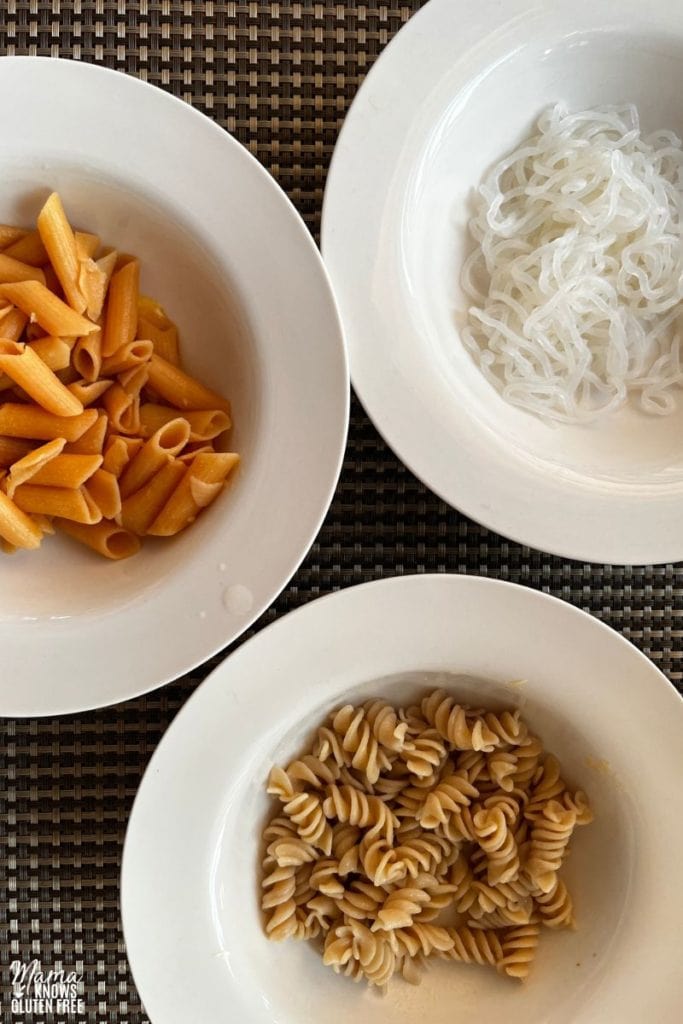
We did not test lasagna noodles. We recommend Barilla Gluten-free Oven-Ready Lasagna for the Best Lasagna category because it’s the product that Mama Knows Gluten-Free used to develop our popular lasagna recipe, and because we determined from our research that other products are less available and less popular.
In addition to the pastas we listed above, we also tested Mueller’s Gluten-Free Spaghetti, Barilla Gluten-Free Spaghetti, Simple Truth Shirataki Noodles, Simple Truth Red Lentil Penne, Trader Joe’s Organic Yellow Lentil and Brown Rice Pasta, and Veggie Craft Farms Gluten-Free Rotini.
Why Trust Mama Knows Gluten-Free
Audrey Roberts, a mom of four, founded Mama Knows Gluten-Free with the goal of helping other families eat better while navigating gluten and dairy allergies and sensitivities. She has been following a gluten-free diet since 2010. She has developed many gluten-free pasta dishes over the years, including Gluten-Free Penne Pasta Alfredo with Chicken, Gluten-Free Spaghetti Sauce, and Gluten-Free Bacon, Tomato & Cheese Macaroni Salad.
This article was researched, tested, and written by Margaret Badore. Margaret is a journalist who has covered science, food, and health topics for over 15 years. She is an experienced product tester, who hopes to help readers avoid wasting money and resources on products that don’t meet their needs.
FAQs:
Does Gluten-Free Pasta Taste Different?
Most gluten-free pasta does taste a little bit different than wheat-based pasta, especially if you eat the cooked noodles with no sauce. We found that most rice and corn based pastas have less flavor and can be slightly bland when eaten with just salt and olive oil, however these pastas are an excellent base for flavorful sauces.
Generally, lentil and chickpea based pastas tend to have a slightly bean-y taste that our testers actually quite liked. This flavor also tends to pair well with savory sauces.
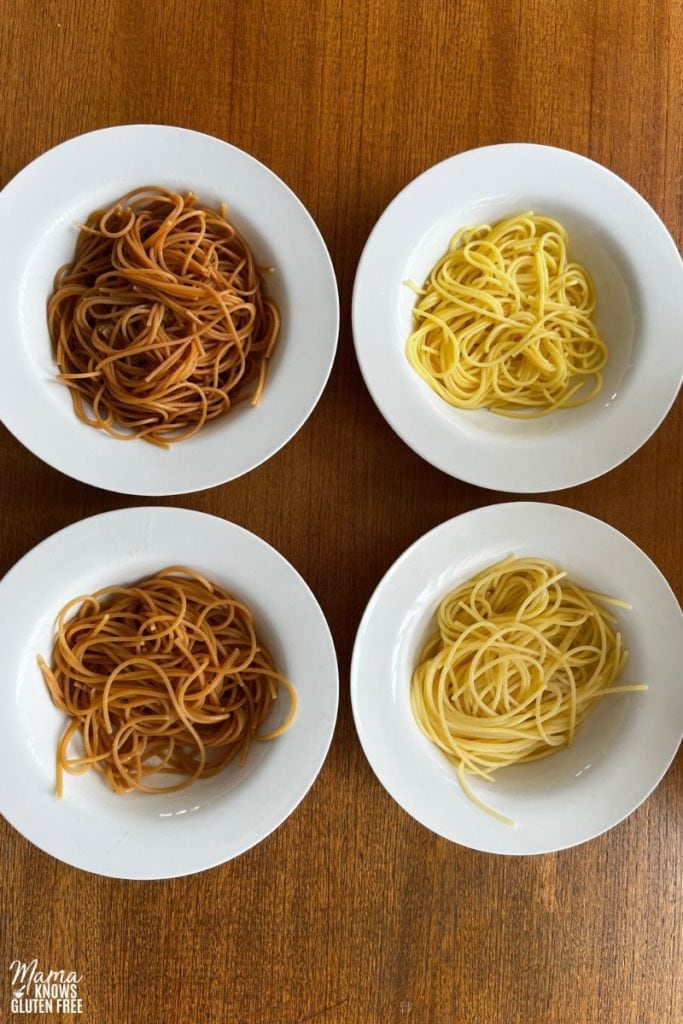
Is Gluten-Free Pasta Healthy?
Depending on the ingredients, gluten-free pastas can be higher in fiber, protein, and other important nutrients than refined wheat flour pastas. Of course what’s “healthy” can vary a lot from person to person, so it’s important to keep in mind your personal dietary requirements and health needs.
What Is Gluten-Free Pasta Usually Made Of?
Gluten-free pastas vary widely in terms of ingredients. Common ingredients in gluten-free pasta include rice, corn, lentil flour, chickpea flour, quinoa, and cauliflower.
Is Gluten-Free Pasta Good for Diabetics?
Most gluten-free pastas are significant sources of carbohydrates. If you’re a person with diabetes, it’s best to consult with your doctor or a registered dietitian about the best options for you.
Does Gluten-Free Pasta Have Less Carbs?
The amount of carbohydrate in gluten-free pasta varies widely depending on the ingredients. Rice-based pastas tend to be higher in carbs, while chickpea based pastas tend to be lower in carbs.
How Do You Cook Gluten-Free Pasta?
Most gluten-free pasta is boiled in salted water, just like regular pasta. However, some options do come pre-cooked and only require heating. Check the package for cooking and storage instructions.
Can You Reheat Gluten-Free Pasta?
Yes, you can reheat gluten-free pasta in the microwave or in a saucepan on the stove. Some gluten-free pastas can get more chewy as they cool down, but usually soften up again when reheated.
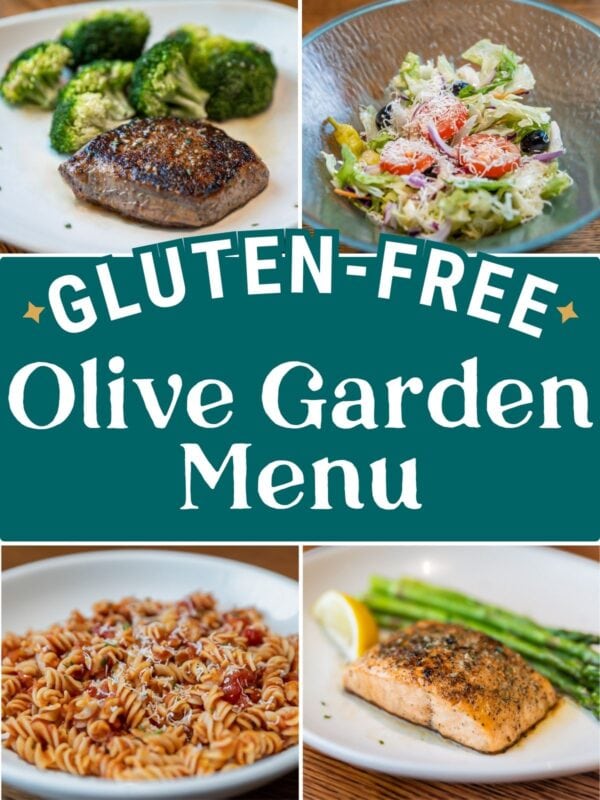
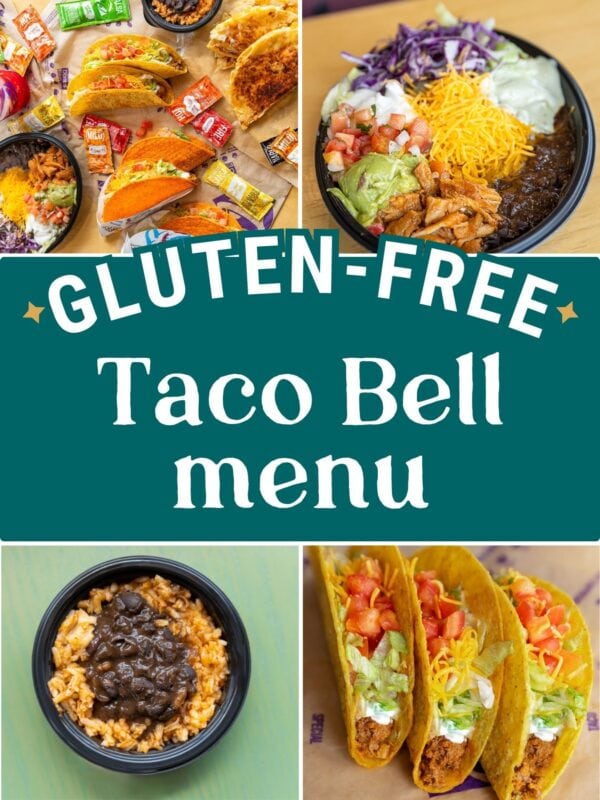
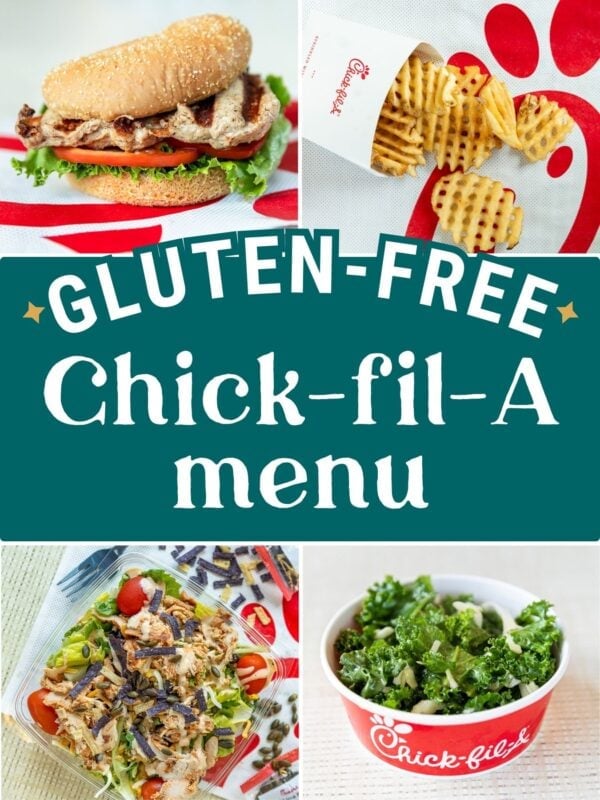
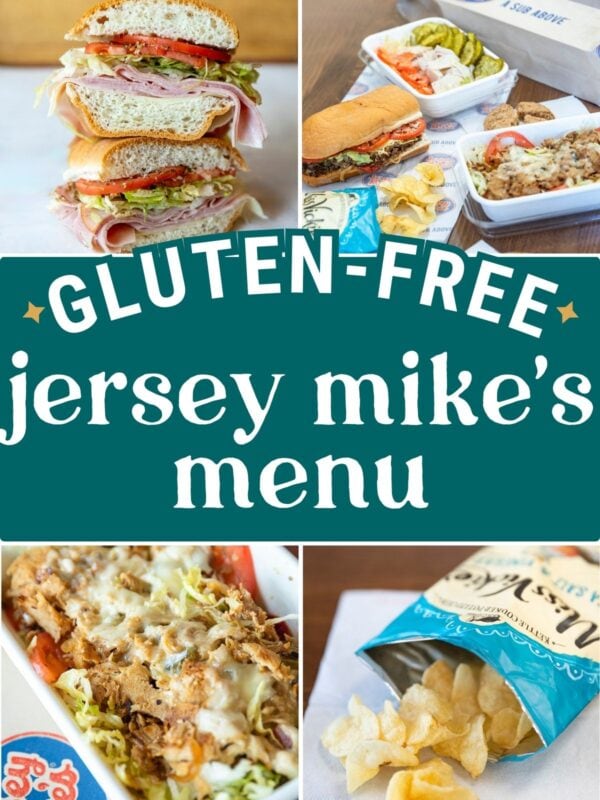






Audrey, I’ve tried a gazillion different gluten-free pastas. Okay, maybe not that many but it sure seems like it! Tinkyada definitely makes a decent product. But if you have the chance, try “Rummo” gluten-free pasta. Hands down, bar none, it’s the best-quality, best-tasting, best-behaving brand I’ve tried. It doesn’t get mushy nor does it change texture when reheated.
With the name, Dante Sorrenti, I know pasta. And with Celiac, I sure miss it. This is a great resource. By chance do you a a PDF that can be downloaded for future reference. Thank you very much!
LaVenesiane is the best gluten free pasta that tastes like real pasta. And Barilla, all varieties, comes in a close second.
Thank you for information about pasta. My son and his wife will be in the USA in November and I shall ask him to bring home to me some of the items you mentioned. There is a very limited supply here (Ireland) and I would like to taste something different.
Again, thank you
Deirdre.